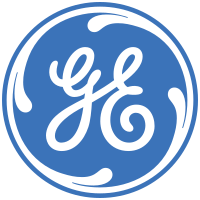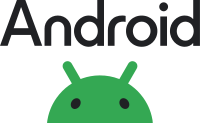-
Use Cases
-
Resources
-
Pricing
History of Operating Systems Timeline
(1950s - Present)Early Operating Systems
GM-NAA I/O
1956
% complete
The GM-NAA I/O was the first operating system used for real work, developed by General Motors' Research division for the IBM 704 computer in 1956.
EXEC I and EXEC II
1957
% complete
General Motors' Research division developed the EXEC I operating system for the UNIVAC 1107, followed by the development of the EXEC II operating system by Computer Sciences Corporation, which was delivered to UNIVAC.
EXEC II ported to UNIVAC 1108
1960
% complete
The EXEC II operating system was ported to the UNIVAC 1108, expanding its usage beyond the UNIVAC 1107.
MCP (Master Control Program)
1961
% complete
The Burroughs Corporation introduced the MCP operating system with the B5000 computer in 1961, providing advanced features such as memory protection and multitasking.
Image source: Burroughs Large Systems

GECOS
1962
% complete
GE introduced the GECOS operating system with the GE-600 series computers in 1962, becoming widely used in commercial applications.
Image source: General Comprehensive Operating System

EXEC 8
1965
% complete
UNIVAC developed the EXEC 8 operating system for the UNIVAC 1108, serving as the basis for operating systems on later members of the UNIVAC family.
Image source: OS 2200

TOPS-10
1967
% complete
Digital Equipment Corporation developed the TOPS-10 operating system for its PDP-10 line of computers in 1967, offering time-sharing capabilities.
Data General Nova
1969
% complete
The Data General Nova series of computers introduced in 1969 featured their own operating system, providing a cost-effective solution for small businesses and laboratories.
Image source: Data General Nova

CP/M-80
1974
% complete
Digital Research's CP/M-80, released in 1974, became one of the most important operating systems for early microcomputers based on the 8080/8085/Z-80 CPUs.
Image source: CP/M

IBM PC BIOS
1981
% complete
The IBM PC introduced in 1981 featured a BIOS (Basic Input/Output System), which served as an extension of the CP/M-80 concept and evolved over time to include more features and functions.
Image source: BIOS

Virtualization
CP/CMS
1968
% complete
IBM introduced the notion of a virtual machine in 1968 with CP/CMS on the IBM System/360 Model 67, enabling multiple virtual machines to run on a single physical machine.
Image source: CP/CMS

VMware Workstation
1999
% complete
VMware popularized virtualization with their 1999 product, VMware Workstation, allowing users to run multiple operating systems simultaneously on a single computer.
Image source: VMware Workstation
Mobile Operating Systems
Palm OS
1996
% complete
Palm Computing released the Pilot 1000 and Pilot 5000 in 1996, running the Palm OS, which became popular in personal digital assistants (PDAs).
Image source: Palm OS

Symbian
1998
% complete
Symbian was the world's most widely used smartphone operating system until 2010, with a peak market share of 74% in 2006.
Image source: Symbian

Windows Mobile
2000
% complete
Microsoft Windows CE served as the base for Pocket PC 2000, later renamed Windows Mobile in 2003, becoming the most common operating system for smartphones in the U.S. in 2007.
Image source: Windows Mobile

iPhone OS (Later iOS)
2007
% complete
Apple introduced the iPhone in 2007, running the iPhone OS (later renamed iOS), based on the Unix-like Darwin operating system.
Android
2008
% complete
Android, introduced in 2008, is a mobile operating system based on a modified Linux kernel, developed by Google and widely used on smartphones and tablets.
Image source: Android (operating system)

Windows Phone
2010
% complete
Microsoft re-entered the mobile operating system market with Windows Phone in 2010, which was later replaced by Windows 10 Mobile in 2015.
Modern Operating Systems
Mac OS X transition to Intel processors
2005
% complete
In 2005, Apple transitioned its Mac computers to Intel processors, aligning their hardware architecture with the x86 platform while retaining PowerPC support until 2009.
Key Facts
- The first operating system, GM-NAA I/O, was developed by IBM in the 1950s.
- UNIX, developed by Bell Labs in the 1970s, is widely considered one of the most influential operating systems.
- Microsoft released MS-DOS in 1981, which became the dominant operating system for personal computers in the 1980s.
- The development of graphical user interfaces (GUI) revolutionized the user experience, with Macintosh OS and Windows 95 leading the way.
- Linux, an open-source operating system, gained popularity in the late 1990s and continues to be widely used today.
Source
This History of Operating Systems timeline was generated with the help of AI using information found on the internet.
We strive to make these timelines as accurate as possible, but occasionally inaccurates slip in. If you notice anything amiss, let us know at [email protected] and we'll correct it for future visitors.
Create a timeline like this one for free
Preceden lets you create stunning timelines using AI or manually.
Customize your timeline with one of our low-cost paid plans
Export your timeline, add your own events, edit or remove AI-generated events, and much more
Free
$
0
free forever
No credit card required.
Basic
$
10
/month
billed annually
Cancel anytime.
Pro
$
16
/month
billed annually
Cancel anytime.
Common Questions
Can I cancel anytime?
Yes. You can cancel your subscription from your account page at anytime which will ensure you are not charged again. If you cancel you can still access your subscription for the full time period you paid for.
Will you send an annual renewal reminder?
Yes, we will email you a reminder prior to the annual renewal and will also email you a receipt.
Do you offer refunds?
Yes. You can email us within 15 days of any payment and we will issue you a full refund.
What if I have more questions?
Check out our pricing docs or send us an email anytime: [email protected].